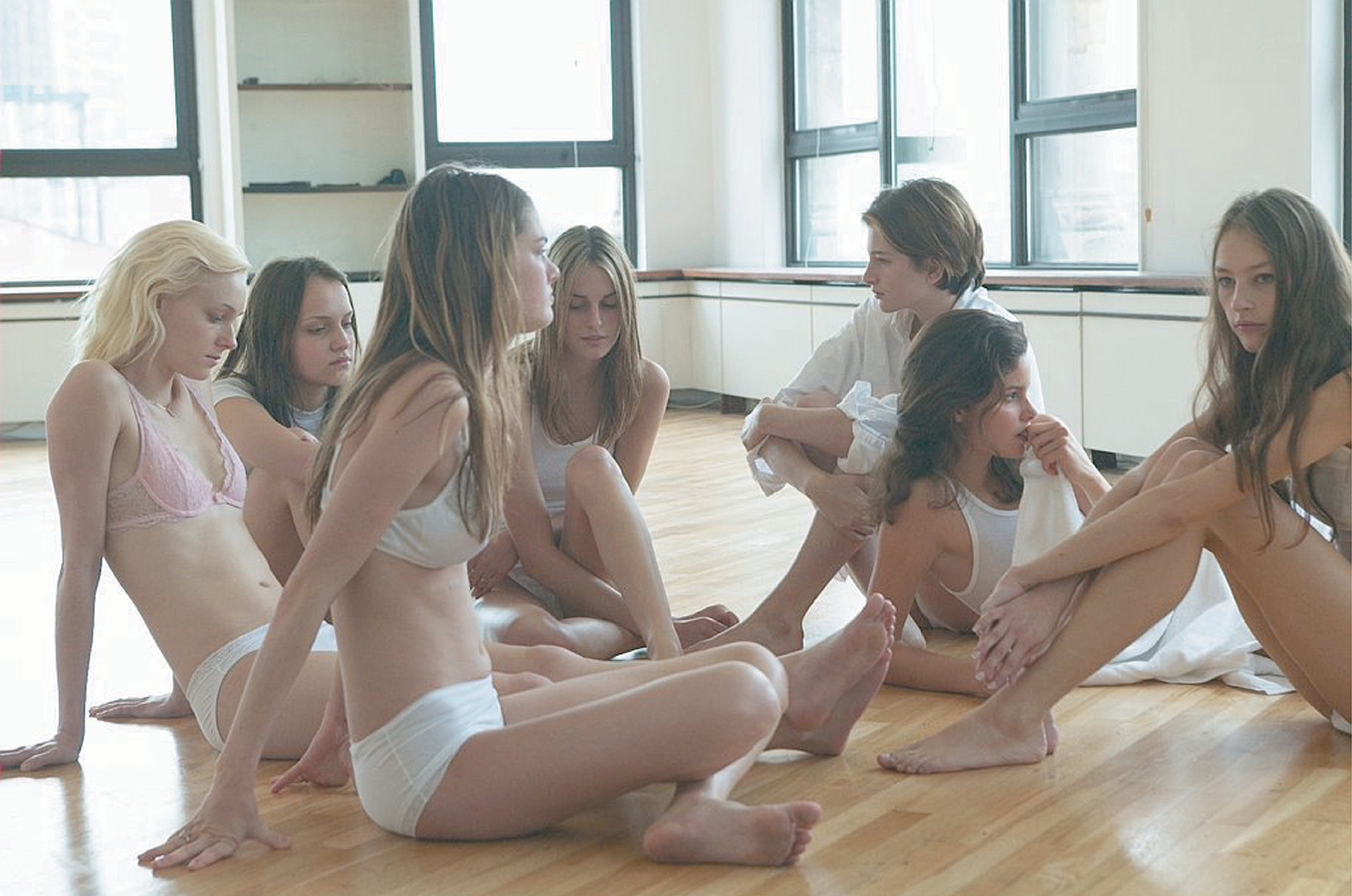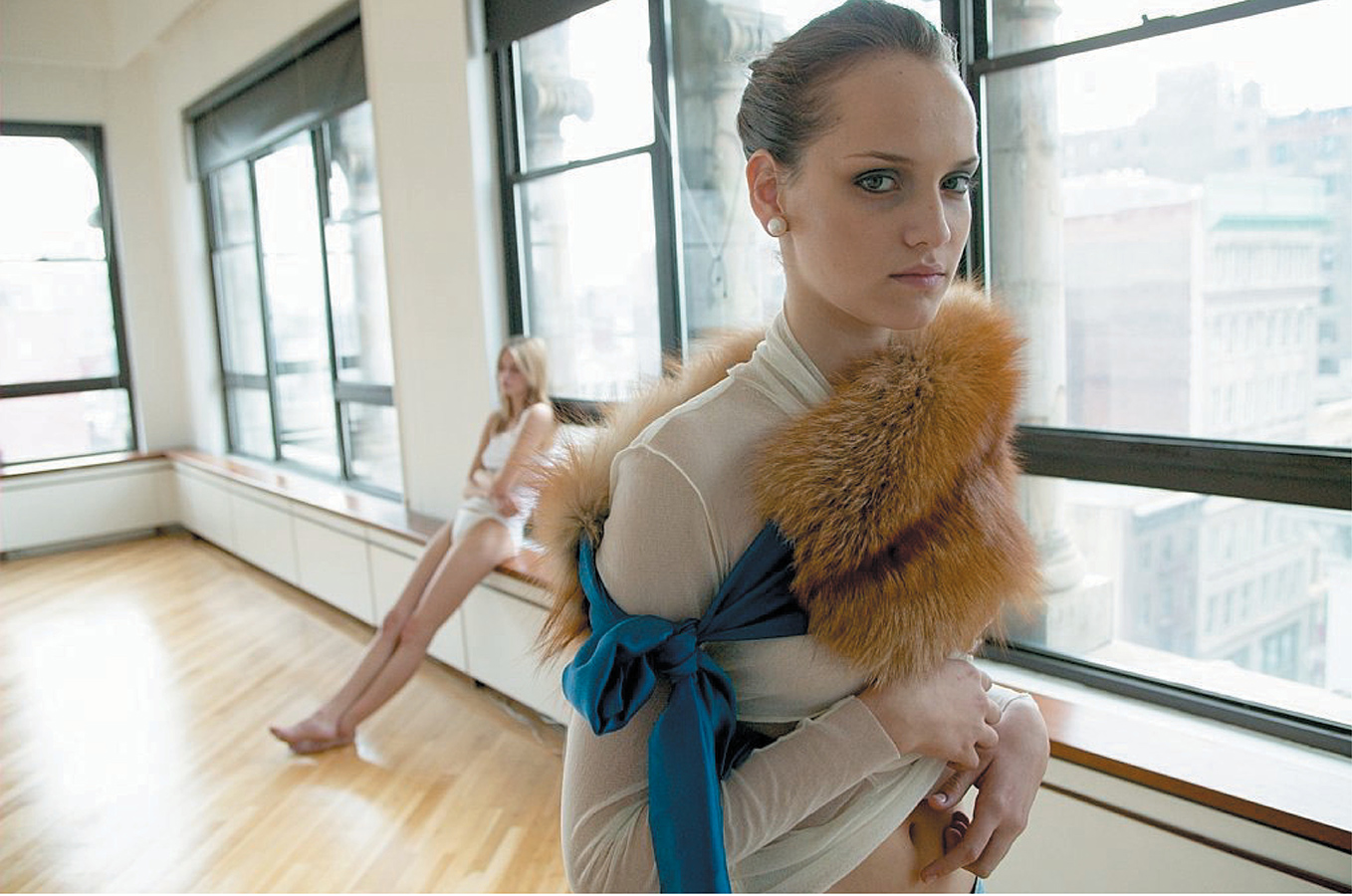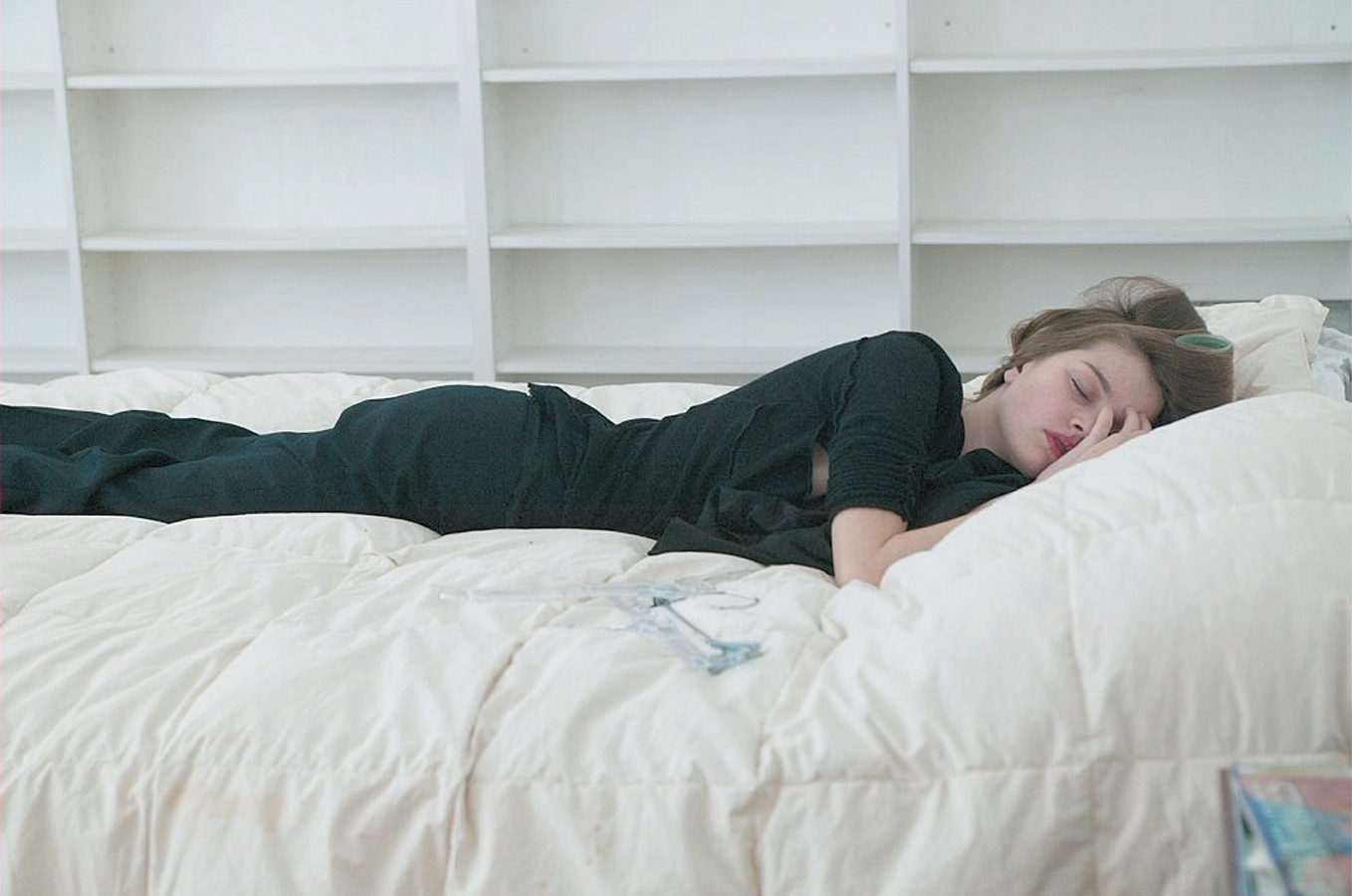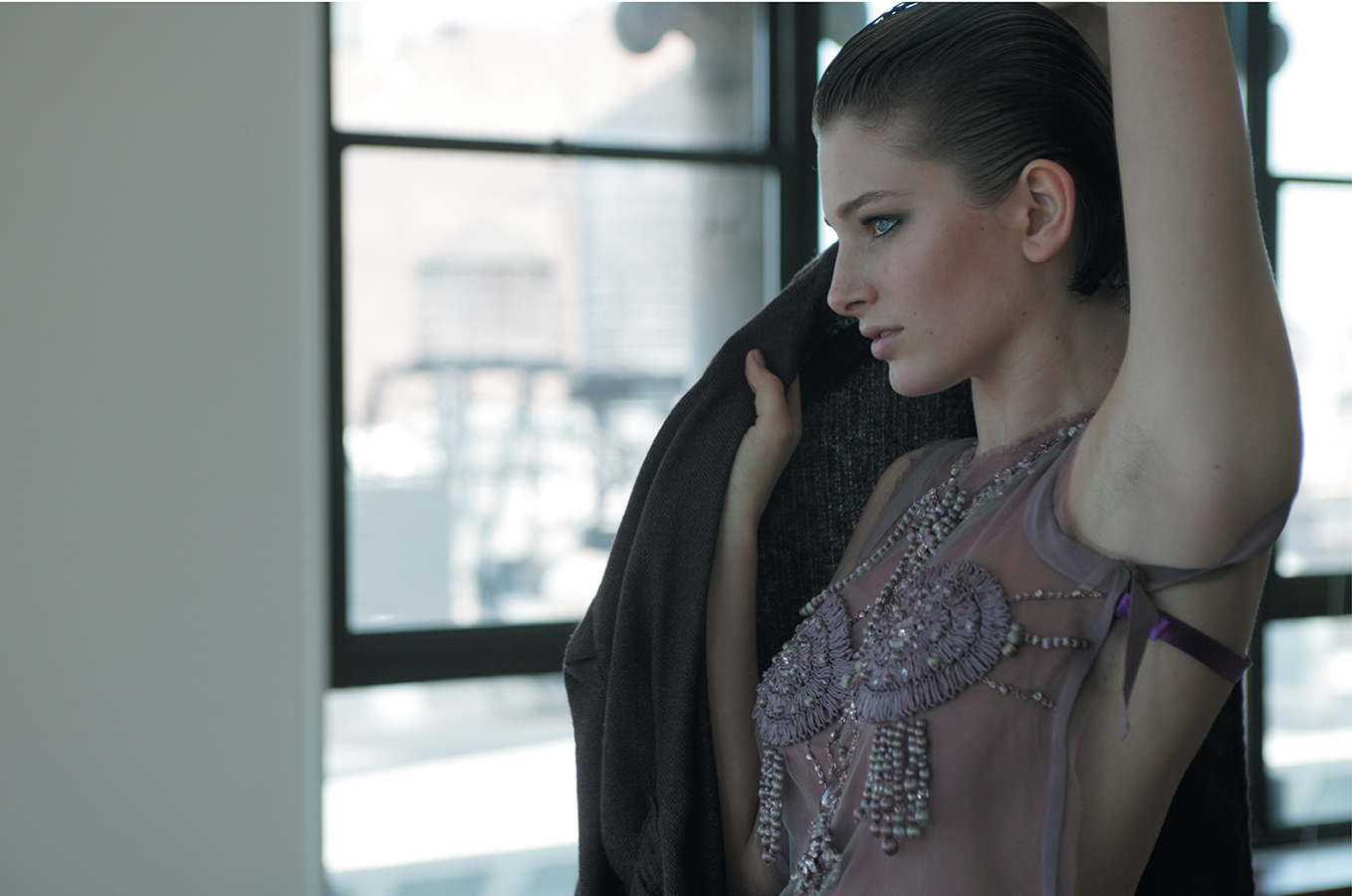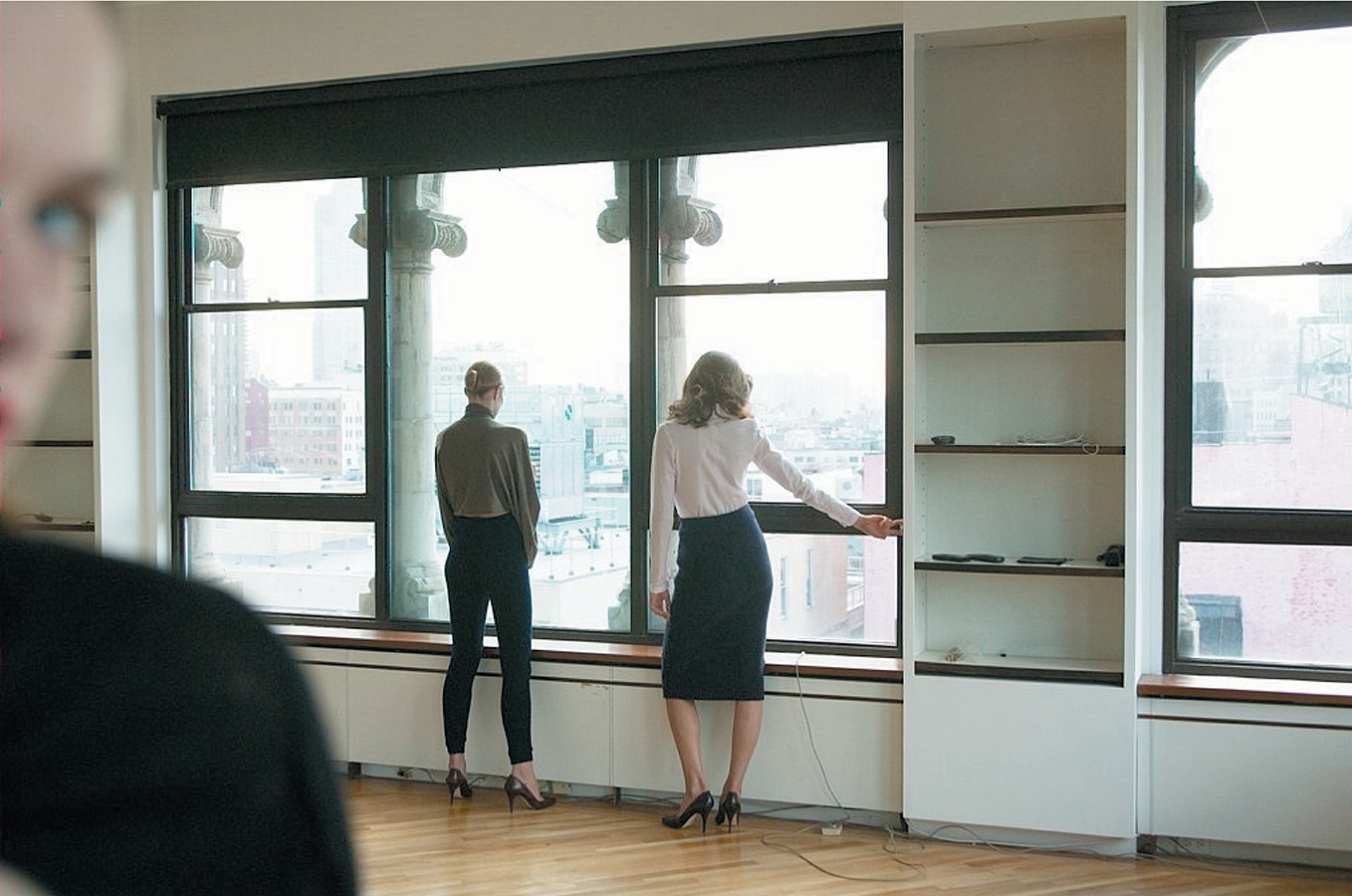PICTURE ME
Images by Denis Piel
Text by Melinda Davis
“ What fashion photography, depressed economists, the contemporary
art scene, Prozac, and young women wearing nothing but their
underwear teach us about the 21st-century struggle for psychic survival.”
— Think Tank; The Future of Luxury, POV: Economics
Denis Piel
began his photography career at age seventeen in Australia. He worked in Europe in the 1970s before moving to New York in 1979 where US Vogue offered him an exclusive contract. Denis is known as one of the top international fashion and advertising photographers of the 1980s, with work that launched Donna Karan and campaigns for Revlon, Phillip Morris, L’Oréal, Chanel, and Estée Lauder, among others. In 1985, Piel founded Jupiter Films, expanding into film production and development and has since then written and directed award-winning commercials in the United States, Australia, and Europe. Piel’s 1994 film Love Is Blind was presented at the Cannes Film Festival, and gained critical acclaim through international film festivals and TV distribution. Denis then launched Umbershoot.net, a conceptual ideas website with participants from around the world. Following the collapse of the dot-com, his present focus is on front2end (f2e.net), a group that specializes in branding and concept work–bringing together international creative teams to rapidly develop and implement emotion-led-branding campaigns. As part of an ongoing interest in creative collaboration and an ideal lifestyle Denis spends his time between New York and southwest France, where he and his wife, Elaine Merkus, are developing a center for creative exchange, with an emphasis on lifestyle, at the Chateau de Padiès (X11–XV11 century).
Melinda Davis
is the author of The New Culture of Desire (The Free Press), a book that chronicles both the adventure and the conclusions of The Human Desire Project. She heads the futurist think tank behind the project, The Next Group. Melinda also writes fiction, and has received a Pushcart Prize. She is currently at work on a novel.
He later describes the experience as a moment of cosmic astonishment. Like waking from one of those “walking naked on Main Street” dreams—with a sudden understanding of the meaning of life.
Let me quickly shift back to ten minutes before the epiphany in question.
We are twelve around the table and we are talking money. Our hero is a scientist turned venture-capital man. This is a deeply serious crowd: post-scandal accountants, Wall Street women, a man usually identified as an unidentified high-ranking economic advisor. There are two representatives from academe. A specialist in global buying and selling. An author of leatherbound books. Bankers. On the table are bottles of Deer Park and Pellegrino, fruit from the deli, and plates of cookies. There are also stacks of notes, multiple lap-top computers, recently Kinko’d reports, big egos, and very little banter. For this is a meeting of serious thinkers— and one in a series of sessions on the economy for THE HUMAN DESIRE PROJECT.
Fashion, needless to say, is not the lead of this story. Please ignore the pictures for the moment— if you can.
Let me step back slightly further to place this particular meeting in context. In simplest terms, The Human Desire Project is an ongoing study to address that heady question, What do we want? (We being the people of the 21st century.) Or perhaps, more strategically, what will we want—for the original project stakeholders are corporate marketers, investors, and a futurist—me. What will we love and why will we love it? What will we do and why will we do it? And ultimately: Where do we go from here? The premise of the study is equally straightforward: all human desire—beginning with the primal desire for the perpetuation of the species—is a response to changing threats and opportunities. We are drawn to those things that (1) defend us and (2) reward us. (In such a model, primal desire—the carnal original—can be expressed in two simple statements: “I don’t want to die” and “Let’s have sex.”) All other enthusiasms evolve from there. These meetings with the movers and shakers of the culture provide the HDP with very privileged intelligence: an advance look at the emerging threats and opportunities that will shape the future—and passions—of us all.
This session is doing little to make anyone feel optimistic. Most of the lines on the graphs go down. The number of threats on the list goes up. Opportunities are iffy. Nothing is certain. Our insiders fall silent, transfixed by Mint Milanos. The air becomes heavy with expert sighs — inflationary, deflationary, painfully congested.
When suddenly we reach the Bingo. “Let’s face it, none of this shit is real,” says a lofty academic reaching for the Pellegrino.
“I can make the numbers say anything I want.”
“We are dealing with figments of our own
imagination.”
“There is nothing to grab hold of—nothing concrete.”
“We are living in intangible times.”
Our hero begins to rub the back of his neck.
It might help relieve the general sense of cosmic imprecision if I were to give our hero a name. Jack. (Not his real name.)
The conclusion that stops the conversation is this: economics, like poetry and dressmaking, has entered the domain of dream and ephemera, of mysterious powers and devastating mood swings. The uncanny. The cosmic. What some call the woo-woo. It is no longer about counting real things with real numbers. Our fortunes move too quickly and too weirdly to be measured. Wealth has become the new hot air, expanding and contracting in vaporous space—inner space—an invisible universe of idea, expectation, consumer confidence, and investor courage. The economy, like so much else in our lives, has gone mental. Its gears churn uncertainly inside our own heads.
So what else is new, you may well ask. This switch from outer to inner reality is the defining phenomenon of our times. Whether we realize it or not, each of us is spending less and less time in the exterior, physical world and more and more time in an interior, imaginational world—a reality that cannot be seen or touched or counted, but that must be conjured up in the mind’s eye. The imaginational world is not an imaginary world, by any means, but an invisible, digitally accelerated, neuron-and-electron-spun world that exists—that can only exist for us, really—in the human imagination. A series of images projected on the walls of the skull. Inner vision. Thought. Plato’s got a brand new cave.
Consider this. Our entire socioeconomic structure is imaginational: information, intellectual capital, brand image, the power of innovative thinking and idea. We have moved from making things, Henry Ford–style, to dreaming things up, Bill Gates–style. Our jobs are imaginational: 80% of us are white-collar workers, processing words and numbers and images—deeply seated in the workplace of the mind. Our pleasures are increasingly imaginational. We escape into the stream of images provided by the ubiquitous screen: TV, the computer, movies, electronic games, video culture, and online lives that keep us always at least one degree removed from physical reality.
Our culture’s sense of where the real action is is becoming increasingly mystical—spiritual. Even our most physical pursuits are going on more and more inside our heads. Sex! An astonishing percentage of sexual experience is taking place not face-to-face but online: erotic meetings of minds and not bodies. (Some 85% of websites are sex-related.) Sports! The US Olympic Committee states unequivocally that at the highest levels, athletics has become largely a competition of the mind. Even the most gravity-hugging among us have been forced from the primarily physical world for which we were originally created, to find ourselves in an extremely disorienting new environment for which we are not prepared. This most extraordinary phenomenon, in which one’s interior reality becomes more pressing, more real, than one’s exterior reality—heretofore a fairly conventional definition of insanity—is the new human condition.
“It’s not the meat, it’s the motion,” says one of the Wall Street women.
“We are strangers in a very strange new land.”
And a gauzy veil of dizziness floats over the face of our hero. “I find all of this talk about figments of the imagination and meaningless math and intangible times to be, well, rather anxiety-provoking,” says Jack.
“Indeed!” says the lofty academic (assuming the role of alpha). “We must learn to deal with mystery!”
“The market is a mystery!”
“Reality is a mystery!”
“The fact that we can fly is a mystery!”
“You can fly?” asks the anonymous high-ranking advisor.
“We are not just counting beans anymore.”
Let me take a moment to underscore my point. Like all human beings hardwired for the physical world, classic scientists—economic and otherwise—are highly enamored of physical evidence. They count. They weigh. They measure. They observe. They press their noses to beakers and cages. They line things up. They crunch numbers and Tums. Certainty comes from objective reality—bugs on a slide, cash in the bank. Little wonder all this new intangible reality makes objective realists feel off-guard and anxious. (“Hey! None of this shit is real!”)
“We can be sure of nothing!”
“We are losing our grip!”
“All is vanity! Nothing is fair!”
“Is Graydon Carter coming?” asks one of the Wall Street women, dissembling.
At which point our hero begins to weep. Discreetly at first, a cough, a sniffle.
“We do not have the tools for this new environment!”
“We have no guideposts, no map of the woo-woo.”
“I fear we no longer have any control.”
“Reality is all in our heads!”
And anxiety begins to spread through the room like SARS on the breath of experts. (Jesus, is The Matrix real?) For there you have it, a brand new threat: we have changed the world faster than we have been able to adapt to the change. We are struggling for happy survival in a newly imaginational world—but we are still physical creatures, hardwired for physical reality. Is this change from our natural, objective environment more than most of us can handle? We worry, like a baby watching water spin down the bath drain, that we might be sucked into the same mysterious, obliterating maelstrom. We worry that we might disappear into thin air—get lost in the mist like everything else—our own image (existence!) obliterated by so many competing, fleeting images. Can we develop the tools and strategies we need to deal with the inevitable state-of-mind emergency? At the farther shores of the culture, we ask terrifying questions. Will future folks, as the transhumanists predict, be forced to discard their bodies in favor of faster data processors, downloading their imaginational identities—their brains—into superior and possibly invisible electronic systems?
For now we are fighting for our invisible lives inside—there, where an accelerating stream of mental stimulation and imaginational challenge collides with an increasingly embattled human psyche. Too much change to deal with! Too many things on our minds! Nothing we can get a grip on! Will we all just go crazy? (It comes as no surprise that mental health is one of the first victims of the new imaginational age. More than a third of Americans suffer from depression, anxiety, phobias, panic, or other mental or addictive disorders.) Now that reality itself has gone mental, our concept of mortal danger has gone mental, too. We have transformed the human survival instinct—our primal desire—from “I don’t want to die” to “I don’t want to lose my mental wherewithal, my sense of self.” We have shifted our sense of peak experience from the physical pleasure of orgasm to the imaginational pleasure of the Zone, the Flow, the Rush, bliss—a sense of sublime oneness with the invisible universe. What we have not yet found is how to master this new world. How do we conquer the imaginational, as we once conquered (for better or worse) the physical world?
Jack and his colleagues worry the answers. Writers fumfer for words. Scholars pat their pockets for smokes. Wall Street women hit the brownies. Accountants twiddle their pens and hum like primitives chanting for rain. Bankers shrug like naked aboriginals and reach for their cell phones to call their associates.
“Hey! Is that a camera in your Samsung mobile?!?!” All eyes embrace the lens.
Now it is tempting to call this an evolutionary moment—an exemplary scene of human adaptability, reaching for new tools in response to new challenges. If the problem is that life is imaginational—let’s find some imaginational control! Let’s become masters of the flow of image! For the strategy that keeps our species alive is taking charge of—and finding pleasure in—the means of the creation: collaborating in the making of the new human universe. I admit that equating “Let’s have sex!” with “Let’s shoot photos!” is a reach. (May I refer you, however, to the opening scenes of Blow-Up.) And just look at what is going on in the think tank! Turning their backs on economics gone mental, our experts begin to take pictures. Pictures of the floor. Pictures of their laps. Pictures of Pepperidge Farm Chocolate Chunks in artful still lives with notepads and hats. They take pictures of themselves. They take pictures of each other. They take pictures of themselves taking pictures of each other. Soon they are e-mailing shots around the globe. One accountant e-mails a picture of himself to his assistant, complete with urgent PhotoShop instructions: make the jaw firmer, the eyes bluer, the hair green, and e-mail back immediately.
Aha! Another evolutionary jump—for the game has moved on to a higher imaginational ground. No longer merely documenting physical reality (and mimicking the early history of photography), our experts are imposing an inner vision on their work. For these pictures are not pictures of the physical world, they are pictures of the reality — of the selves — they see inside. Manipulated, orchestrated, posed, styled—the purpose of this picture-making is to validate an inner sense of self: to have an idea of who we are made real with physical artifact.
Picture me!
Someone turns on Annie Lenox. Someone else adjusts the lights. Compacts emerge and are passed around. Lipstick and pencils, backdrops and story. People trade clothes and style one another: a cardigan sweater becomes a turban, a scarf obscures parts that “just aren’t the real me.” People experiment with self-revelatory gesture, juxtaposition, trompe l’oeil. All of the women, and some of the men, do unexpected things with shoes. Portraiture becomes self-portraiture, self-portraiture becomes self-transformation. Jack our hero emerges from the kitchen with oranges poked down the front of his shirt, a hint of eyeliner, and a gleam in his eye.
“God, I love the lens!” he says.
It is a moment of cosmic astonishment. He has found at least one means—perhaps frivolous, perhaps not—of imaginational life control.
It is beginning to look a lot like fashion.
Snicker if you will. But consider the evidence. In these obsessively image-driven (imaginational!) times, we are all in a constant struggle to become imaginational masters. Each of us must fight the fight with the resources we have at hand. The cynical may medicate, the mystical may meditate, the intellectual cogitate, the creative create. Yet the most accessible—indeed ubiquitous—resource for self-empowerment in the age of the imaginational is the simple manipulation of image. And all it takes is a camera. And so we are each of us in engaged in an ongoing—and sometimes dire—existential relationship with The Lens.
Oh yes you are.
It is why we all compose ourselves—pose—for even a snapshot or a passport photo. Picture me! (“How I am shot is who I am.”)
It is why on-the-scene reporters are in constant battle with background folks who feel compelled to wave at the camera. “Picture me! Look! I am on TV!” (“I am shot, therefore I am.”)
It is why, at even the most highbrow of art events—museum and gallery openings, for example—there are cringingly high numbers of merely-making-the-scene folks who spend more time jockeying for the lens of the paparazzi than looking at the actual art. “Picture me with Ingrid Sischy and Salman Rushdie! With just a sliver of Mathew Barney’s head!” (“I am shot with the cool, therefore I
am cool.”)
It is why digital cameras and CUSeeMe video, cell phones with cameras, and the downloading of photos for personal websites have so captured our imaginations, creating new industries and otherwise puzzling new cultural phenomena: reality television, reality websites. Picture me! (“I am an image on a screen! I am a player!”)
It is why our current unconscious conventional wisdom does not see the taking of a picture as the theft of a soul, as primitive conventional wisdom once did. Now, being found worthy of film is a kind of anointing: it bestows a bigger soul, it endows us with extra élan vital. Our culture’s great jones for celebrity—so often decried as a shameful plunging of cultural values—might in fact be a far more noble human instinct: an adaptive reflex in the struggle for human survival. We are naturally attracted to the powerful—the fittest—who attract the immortal power of limelight. We naturally want to be one of those blessed. (“Those who are shot live larger, live on.”)
It is why we are so captured by the famous photo of Weegee, in which a young women kneeling over her just-drowned lover flashes a Hollywood smile to the lens in subliminal response to the lift of the photographer’s camera. We recognize the impulse. We are disturbed, we are amused. We vow to be in better control of our own image.
It is why photo stylists are becoming the new pop culture celebrities—joining hair-and-makeup artists in the realm of those adored and coveted for their amazing transformational powers.
It is why the fashion industry sells its wares best with advertising and editorial coverage that do not really show the clothes. In spite of the increasing voices of protest—“Make it real! Make those people look like me!”—the shots that sell are the shots that are fabulous (as in, of and about seductive fable), inflected with “just imagine!” meaning.
It is why to be a model is the number one aspiration, at one time or another, for nearly every little girl in America. For it is in fashion photography that our adolescent vision of what it means to be the winning woman is celebrated, captured, made physically real. Photographers and models translate an idealized inner vision of the self to an idealized outer expression of self. (It is interesting to note that the definitive consumer response to Prozac—“it makes me the me I really am inside”—is single-handedly driving the latest age of pharmaceuticals. The largest category of new drugs under development are for meds that create “the idealized me.”) Such transformative power has strong magic. Through the lens of the camera, in the hands of a master photographer, that raw young thing wearing nothing but her smalls can becomes, in fact—in artifact—the very embodiment of our culture’s predominant vision of female power. Is it false? Is it fatuous? Is it dangerous? Is it silly? Perhaps, but it is also newly dire—for to have mastery over intangible reality—to reconcile the mysterious inward with the outward—is the new primal human desire.
It is what we want.
Which brings us full circle to the point of the story. Jack learned a lot by posing for the camera. Fashion photography has a lot to teach even the gravest of thinkers about the gravest of issues: how to survive and thrive in the 21st century. Suddenly fashion, the very embodiment of the ephemeral and the vapid — “None of this shit is real!” — has become a model for understanding everything. This is the way the world works now.
Imagine.
Fashion courtesy: Yves Saint Laurent Rive Gauche, Wynn Smith, and Hermès
Jewelry courtesy: Cartier, Accessories courtesy Hermès
Styling by John Vertin
Hair Benoit Moeyaert
Make-up Yasuo Yoshikawa
Models Vanessa, Paloma, Piper, Leigh, Lisa, Charlotte, Ali
Images for this article photographed with the Canon EOS-1D

